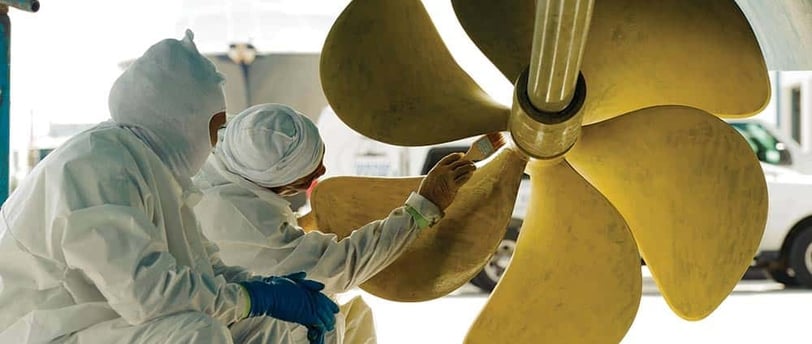Description & Comparison of Different Marine Antifouling Paints
A short summary and comparison of the different types of marine antifouling paints.
BOTTOM PAINTFOULING
12/17/20242 min read


Antifouling bottom paints are essential for protecting boats from marine growth and maintaining their performance. There are several types of antifouling paints available, each with its own characteristics and benefits. Let's explore the main types and compare their features.
Types of Antifouling Bottom Paints
Hard Antifouling Paint
Hard antifouling paint creates a solid, durable coating that resists abrasion and withstands harsh marine environments. It's ideal for:
Fast boats and racing yachts
Vessels that can achieve speeds over 30 knots
Boats used frequently
Underwater cleaning
Hard paints work by slowly releasing biocides from their surface through contact leaching. While effective, they may require wet sanding after a few seasons to remove buildup before reapplication.
Ablative (Soft) Antifouling Paint
Ablative or soft antifouling paints wear away gradually over time, exposing fresh layers of biocides. This self-polishing effect helps maintain a clean hull and optimal hydrodynamic performance. Ablative paints are suitable for:
Vessels with speeds up to 30 knots
Boats with moderate activity levels
Trailered boats or those kept on lifts
Ablative paints are often easier to maintain, as they don't build up over time like hard paints.
Self-Polishing Copolymer (SPC) Ablative Paint
SPC ablative paints offer a controlled release of biocides through a copolymer formula. They work whether the boat is anchored or underway and can be effective for multiple seasons. Some key features include:
Effective for boats at anchor or underway
Potential multi-season protection
May only require light scuffing to reactivate in spring
Hybrid Copolymer Ablative Paint
Hybrid paints combine features of both hard and ablative paints. They offer:
Self-polishing properties
Controlled biocide release
Ability to be burnished for smoothness and speed
Less buildup compared to hard paints
Copper-Free Antifouling Paint
As environmental concerns grow, copper-free antifouling paints are becoming more popular. These paints:
Use alternative antifouling agents like zinc or eco-friendly biocides
Are necessary for aluminum boats to prevent galvanic corrosion
Can be effective against shell fouling, including barnacles and mussels
Comparison Table
When choosing an antifouling paint, consider factors such as your boat's usage patterns, the type of water it will be in, and local environmental regulations. It's also crucial to ensure compatibility with your boat's existing paint and surface preparation. By selecting the right antifouling paint, you can protect your boat effectively while minimizing environmental impact and maintenance efforts.


